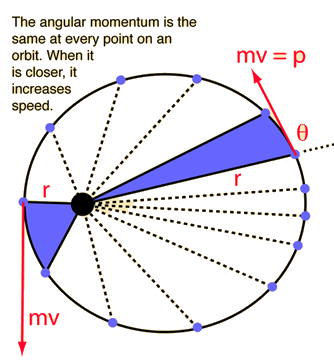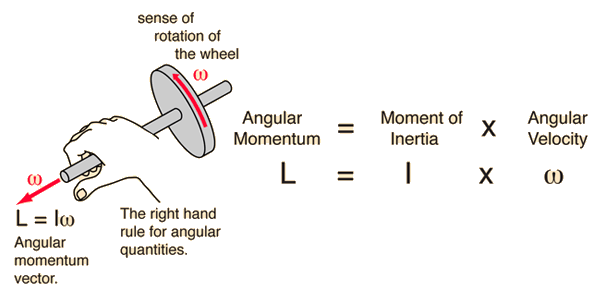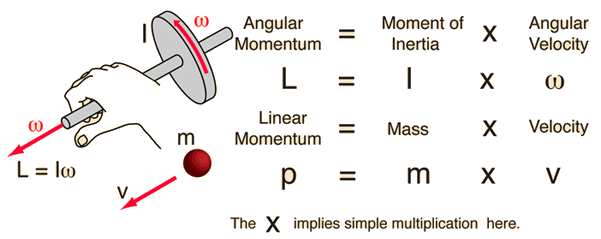Angular Momentum of a Particle
 |
The angular momentum of a particle of mass m with respect to a chosen origin is given by or more formally by the vector product The direction is given by the right hand rule which would give L the direction out of the diagram. For an orbit, angular momentum is conserved, and this leads to one of Kepler's laws. For a circular orbit, L becomes |
Angular momentum of rigid body
| HyperPhysics***** Mechanics *****Rotational motion | R Nave |

